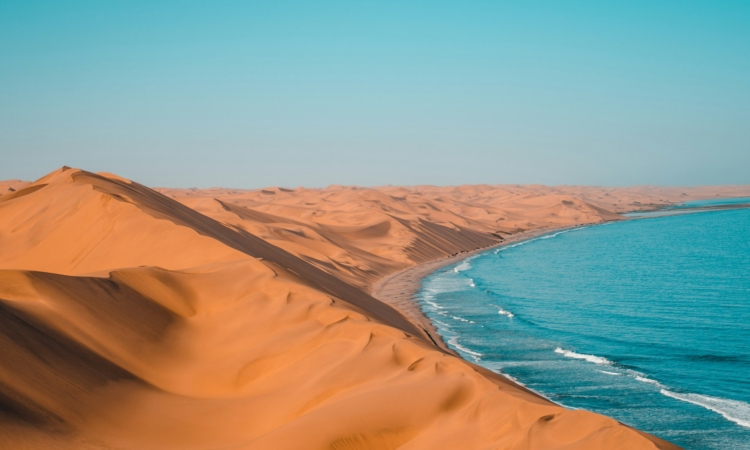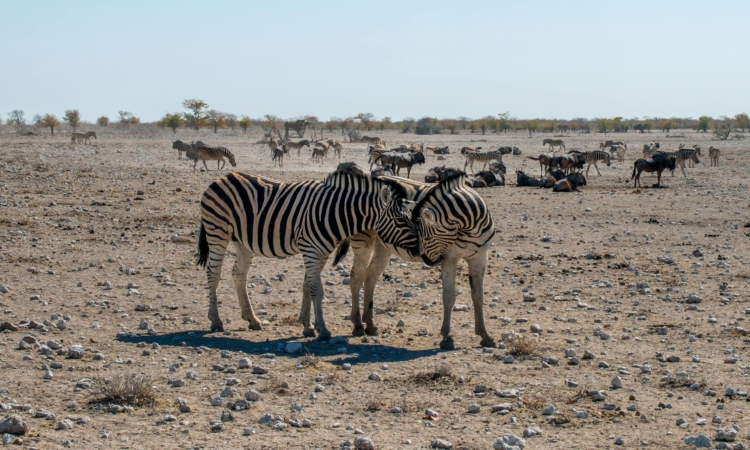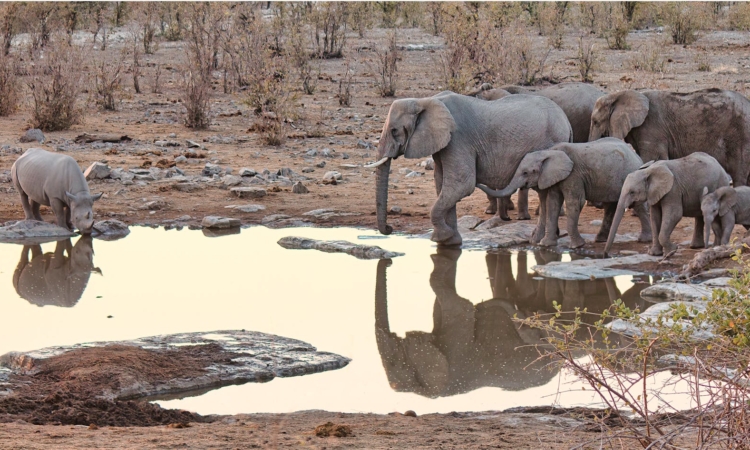A notable feature of the Namib Desert, Sossusvlei is a large, shallow salt and clay pan at the end of the Tsauchab River. It was formed over millions of years through wind erosion, river sediment, and the effect of the cold Benguela Current.
The name “Sossusvlei” means “dead-end marsh,” which describes the pan’s endorheic nature, where the river’s water dries up, leaving a cracked surface.
History of the Namib Desert
Sossusvlei is located in the Namib Desert, one of the oldest deserts on Earth, believed to be at least 55 million years old. Its dry climate is caused by the cold Benguela Current, which prevents moisture from reaching inland areas.
Sediment and Dune Formation
Sand from the Orange River was moved and deposited in the area by wind over millions of years. This, along with the effect of the Benguela Current, helped form the tall sand dunes seen in Sossusvlei today.
The Pan and the Tsauchab River
The Tsauchab River is a temporary river that flows only after rainfall. It ends in Sossusvlei, where the water collects and slowly dries out, leaving layers of salt and clay. The high dunes around the pan block the river from flowing further, giving the pan its closed, endorheic nature.
Dune Movement
The dunes around Sossusvlei are always changing shape because of the wind. Some are known as “star dunes” because the wind comes from different directions and shapes the sand into star-like patterns.
Name and Meaning of Sossusvlei
The name “Sossusvlei” comes from two words: “sossos” (meaning “dead-end” in Nama) and “vlei” (meaning “marsh” in Afrikaans). This name describes a pan where water flows in but has no way to flow out.
Endorheic Drainage Basin
Sossusvlei is called an endorheic basin because it has no outlet for water. When rain falls or the Tsauchab River flows into the pan, the water eventually evaporates, leaving a dry and cracked surface behind.
A Unique Landscape
Sossusvlei is known for its tall sand dunes, dry clay pan, and the rare sight of water in the desert. The contrast between dry land and flowing water makes the area both interesting and beautiful.
In summary, Sossusvlei’s history is shaped by natural forces—wind, water, and time—that created one of Namibia’s most iconic desert landscapes.




